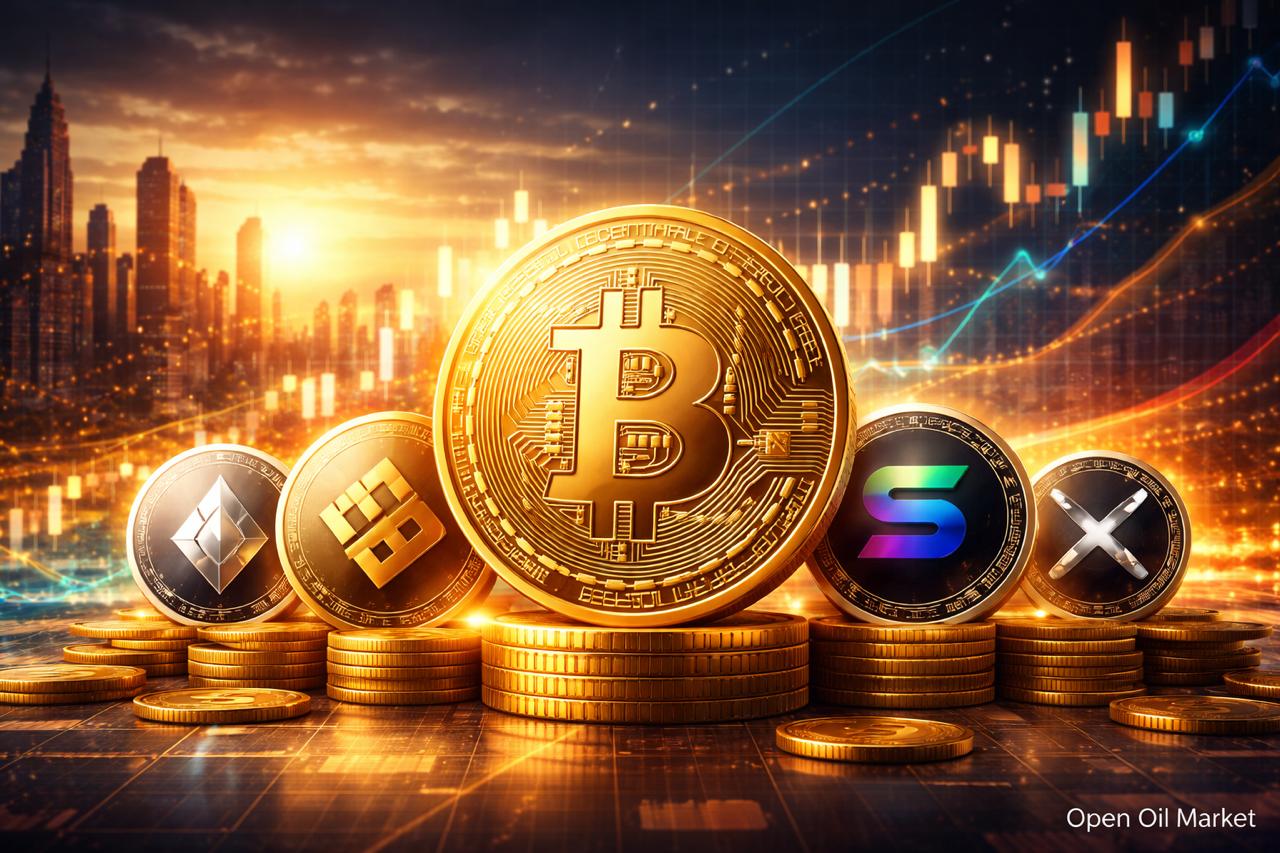How to Choose a Broker for Stock Trading
In the world of financial markets, where trillions of dollars change hands daily, selecting the right broker can be a definitive factor for success or disappointment for millions of traders. Imagine witnessing the promising growth of Tesla stocks or the RTS index, but without a reliable intermediary, your ideas remain on paper. As we look toward 2025, taking into account geopolitical shifts, digitalization, and the growing accessibility of markets for retail investors, the right broker not only opens the door to exchanges—but also minimizes risks, reduces costs, and strengthens your strategy. According to the World Federation of Exchanges, retail trading volume increased by 25% over the past year, with many newcomers eager to break into this world, inspired by success stories like Warren Buffett or modern influencers. However, the statistics are harsh: about 70% of novice traders lose capital in their first year, with a significant portion of those losses attributed to poor platform choice. This guide will help you navigate typical mistakes by outlining proven criteria and real examples from global practices.
Key Criteria for Choosing a Broker
Self-Evaluation and Trader Profile
When you stand at the doorstep of investment, the question "what are the key criteria for choosing a broker?" inevitably arises, especially for those just getting into stock or forex trading. Start with self-evaluation: define your profile—are you a beginner seeking simplicity or an experienced trader in need of advanced tools? Globally, according to BrokerChooser surveys, 62% of users prioritize reliability, followed by low fees and ease of use. For the Russian market, where access to MOEX and the Saint Petersburg Exchange is critical, an ideal broker like Tinkoff Investments offers a zero entry threshold and integration with a banking app, simplifying fund transfers.
Criteria for Beginners and Long-Term Investors
For beginners, the availability of demo accounts and educational resources becomes crucial—imagine practicing with virtual funds of $50,000 while studying the volatility of Bitcoin without incurring real losses. Conversely, long-term investors focus on diversification: the broker should offer not only blue-chip stocks like Apple or Gazprom but also ETFs on emerging markets or fixed-income bonds. In 2025, there is a growing demand for ESG criteria—environmentally responsible investments—where platforms like eToro allow for filtering assets based on sustainability, assisting in building portfolios aligned with global trends such as the transition to green energy. Rank your priorities: security carries an 80% weight since even minimal risks can wipe out years of savings, while fees account for 15%, impacting overall returns.
Personalization and Global Examples
Personalization adds another layer: scalpers trading in real-time require zero latency in order executions, as seen with Interactive Brokers, where the average speed is 0.1 seconds. Passive investors will appreciate automatic dividend reinvestment and robo-advisory features that reduce emotional decision-making. According to Investopedia, ignoring these nuances leads to 40% of failures—therefore, create a checklist: outline your goals (capital growth of 15% per year?), markets (US, Europe, Asia?), and budget (starting from $100). In a global context, Russian traders often combine local players like BCS for ruble transactions with international platforms such as Plus500 for forex access without currency risks. This approach not only optimizes costs but also builds a sustainable strategy tailored to your lifestyle—whether it’s day trading from the office or weekly monitoring from your smartphone.
Regulation and License: The Foundation of Trust
Checking Legitimacy in Russia and Abroad
The question "how to check if a broker is legitimate?" is a fundamental barrier between safe trading and potential scams, especially in an era when online fraudsters disguise themselves as professionals. In Russia, oversight is provided by the Central Bank (CBR), and a list of licensed brokers—professional participants in the securities market—is easily accessible on the official cbr.ru website. Look for a status confirming the right to conduct brokerage and dealer activities; for example, Finam and VTB Broker have held full licenses since the 2000s, ensuring compliance with regulations on the reservation of client funds. Abroad, reliability is guaranteed by the SEC in the US (for access to NYSE), FCA in the UK, and ASIC in Australia—these regulators require quarterly reporting and audits, minimizing risks.
KYC Procedures and Regulatory Comparison
The KYC (Know Your Customer) procedure is a mandatory verification step where you provide a passport, proof of address, and source of income to prevent money laundering according to AML standards. This is not bureaucracy but protection: without KYC, a broker risks millions in fines, and you risk account blockage amidst volatility. Offshore brokers registered in Cyprus (CySEC) or Seychelles are often cheaper, but their protection is weaker—in cases of bankruptcy, funds are only returned through local courts, without guarantees like SIPC (up to $500,000 in the US). Compare: the Russian CBR mandates the segregation of accounts, separating your assets from corporate ones, while the SEC adds insurance through SIPC, covering even data theft.
Geopolitical Challenges and Real Cases
In 2025, geopolitical factors complicate access: sanctions restrict Russians from accessing American platforms like Charles Schwab, making alternatives like Freedom Finance (Kazakhstan, with a bridge to NYSE) or XM (Europe) more relevant. Ensure relevance: use regulator registries—sec.gov for the US, fca.org.uk for the UK. If the broker lacks a license, exit immediately: according to FCA reports, 40% of complaints in 2024 concerned unlicensed firms that led to losses of 200 million euros. Real cases, like the collapse of Wirecard in 2020, underline the point: a license is not a formality but a shield, allowing you to focus on strategy rather than the fear of capital loss. For global traders from Asia or Latin America, ASIC or MAS (Singapore) offers similar protection tailored to local laws.
Fees and Cost of Services: Hidden Traps
Basic Types of Fees and Market Leaders
"What are the costs of broker services?" is a question that is often underestimated until fees "eat up" 20-30% of profits, especially in frequent trades. The overall cost includes trading commissions (0.01-0.1% of volume), withdrawal fees ($1-5 fixed), and inactivity fees ($5-10 per month after 6 months of dormancy). Leaders in low rates: Robinhood in the US with 0% on stocks and ETFs, or Tinkoff Investments in Russia with 0.025% for trades over 50,000 rubles, making them ideal for active traders. Spreads—the difference between buying and selling prices—are critical for forex: ECN brokers like Interactive Brokers hold 0.1-0.5 pips on EUR/USD, while market makers like XM expand to 1 pip but compensate with fixed commissions.
Minimum Deposits and Hidden Charges
Minimum deposits range from 0 at eToro (social trading) to $10,000 at premium platforms like Saxo Bank, which cater to institutional clients. Swaps for overnight positions—a daily fee for carry over (0.5-2% annually)—can double costs for swing traders holding positions for a week. Hidden fees lurk everywhere: currency conversion (1-2% spread when converting USD-RUB), real-time data fees ($10-50/month), or inactivity accumulating unnoticed. For ETFs and bonds, fees are lower: Vanguard through a broker has only 0.03% annual management, compared to 0.5% for active funds.
Global Comparison and Tax Considerations
In a global comparison, Russian brokers like BCS (0.05% on stocks) are advantageous for the local market, but for international forex or crypto, Plus500 is a better option with 0% commission (only a spread of 0.6 pips). Tax implications: in Russia, brokers automatically withhold 13% on profits, while in the US, the W-8BEN form reduces the tax for non-residents to 15%. To calculate, use online calculators on broker websites: enter 10 trades of $1,000 each—you will see how annual costs grow from $50 to $200 when choosing a "cheap" offshore broker. A real example: a trader from Europe, selecting a low-commission broker, saved 15% on a €50,000 portfolio in a year but lost on spreads—the balance is key. In 2025, the trend toward "zero" commissions (like with Trading 212) simplifies decisions, but always read the fine print of the contract to avoid surprises like sudden API access charges.
Trading Platforms and Tools: The Key to Success
Popular Platforms and Their Features
"Which platform is best for trading?" is a question regarding your "desktop" in the world of markets, where convenience determines your speed of response to news such as a Fed report. MetaTrader 5 (MT5) remains the gold standard: versatile for forex, CFDs, and futures, with thousands of indicators and automation through the MQL5 language, allowing you to create an arbitrage bot in hours. For stocks and options, Thinkorswim from TD Ameritrade (now Schwab) offers advanced analytics—from heat maps of volatility to Greeks simulations for options, ideal for traders analyzing 50+ instruments daily.
Mobile Apps and Demo Accounts
Mobile applications have evolved: Trading 212 for iOS/Android integrates charts, news, and orders in one interface, with push notifications for dividends or stop-losses. A demo account is a must-have: with virtual funds ($10,000-$100,000), you'll test strategies like scalping on EUR/USD without risk—eToro offers this for free indefinitely. APIs for algorithmic trading open doors for professionals: Alpaca in the US is free for Python bots, integrating with QuantConnect for back-testing on 20 years of historical data, helping optimize strategies for current volatility.
Tools, Integrations, and Trends for 2025
Tools must encompass a range: from 5,000+ stocks (blue chips like Nvidia or Rosneft) to gold futures and index options. Integration with TradingView is a bonus at Pepperstone: trade directly from custom charts with 100+ indicators. For scalping, latency below 1 ms is essential, as seen with NinjaTrader, where order execution is at the institutional level; beginners will appreciate the simplicity of OANDA’s WebTrader—a web version without downloads, featuring basic tutorials. In 2025, AI is becoming trendy: platforms like Capital.com use machine learning for predictive analytics, forecasting trends with 70% accuracy based on big data from Reuters and Bloomberg. Test during peak hours (NYSE opening at 4:30 PM MSK): if lags exceed 2 seconds, the platform is not for you. A case study: a trader from Asia transitioned to MT5 with a mobile focus, increasing profitability by 12%, thanks to seamless integration with the economic events calendar. Choosing a platform is an investment in efficiency, where convenience meets power, transforming data into profit.
Service and Customer Support: Invisible Help
Support Channels and Response Speed
"What is the speed and quality of support?" is an intention born from nighttime anxieties when an order isn't filled, and the market is plummeting. 24/7 live chat is standard for global players: IG Group responds around the clock in several languages, resolving 90% of queries in 3 minutes, from verification to unblocking after false 2FA. In Russia, Tinkoff and Finam provide round-the-clock Russian-speaking support, with call centers where operators assist with taxes or disputed trades—reviews praise their speed, unlike the email-only approach of smaller firms.
Educational Resources and Personalized Services
Personal managers are a privilege for VIP clients: with a deposit over $50,000, Saxo Bank assigns a dedicated specialist to analyze your strategy and offer custom reports. Educational resources strengthen service: Admiral Markets holds weekly webinars on technical analysis, covering everything from basic candlestick patterns to HFT algorithms, with recordings available for offline access. The FAQ and help center at Deriv contain over 1,000 articles, from "how to set a stop-loss" to "strategies on VIX volatility," saving time on routine inquiries.
Dispute Resolution and Global Localization
For disputes, ombudsmen from FCA or CBR resolve 80% of cases in favor of the client, such as in instances of withdrawal delays with a broker in 2024. Globally, English-speaking support is universal, but for emerging markets, localization is key: XM offers chat in 20 languages, including Hindi and Portuguese. Reviews emphasize: "Support saved me from panic selling during the flash crash of 2022"—a typical narrative. In crisis moments, such as the crypto crash in March 2025, quality improved by 30%, according to BrokerChooser reports, thanks to AI chatbots handling 70% of routine inquiries. Test it: send a test query about options commission—if the response is helpful and timely, the service is up to par. This "invisible" layer transforms a broker from mere intermediary to partner, helping novices build confidence, and allowing pros to focus onmarkets without bureaucratic hindrances.
Security and Fund Protection: A Shield Against Threats
Basic Protection Measures and Authentication
"How to protect funds with a broker?" is a question echoing after hacker scandals like Equifax in 2017, where millions suffered from leaks. Two-factor authentication (2FA) is the basic shield: Google Authenticator or SMS are standard across all top brokers, blocking 99% of unauthorized logins. Biometric verification adds a layer: Revolut uses Face ID for transactions over $1,000, reducing phishing risks. 256-bit SSL/TLS encryption is standard, as in online banking, ensuring that portfolio data of $100,000 is transmitted securely without interception.
Insurance and Asset Segregation
Fund insurance is key: in the US, SIPC covers up to $500,000 per account (including $250,000 in cash) in the event of the broker’s bankruptcy, as seen with MF Global in 2011. In Europe, FSCS (FCA) guarantees £85,000, while in Russia, the Deposit Insurance Fund covers up to 1.4 million rubles for brokerage accounts. Asset segregation separates your funds from corporate assets: XM keeps them in banks like Barclays, with quarterly audits from PwC. Protection against hackers: Cloudflare at Plus500 filters DDoS attacks, and cloud backups (AWS) can restore accounts within minutes.
Fraud Risks and Future Trends
Fraud risks are real: check on scamadviser.com or perform a domain Whois lookup—20% of complaints to ESMA in 2024 concerned fake websites. Sanctions complicate matters: Russians risk being blocked by US firms, but CySEC brokers like eToro offer workarounds through the EU. GDPR in Europe prohibits selling data, while blockchain audits at Kraken (for crypto) add transparency—transactions are verifiable in real-time. The FTX case in 2022: without protection, clients lost $8 billion, underscoring the importance—choose brokers offering coverage >$100,000. Test it: enable 2FA, request insurance details in the contract. In 2025, quantum encryption is being tested by leaders like Fidelity, promising invulnerability. Security is not an option, but a foundation, allowing you to sleep peacefully knowing your capital is protected while markets fluctuate.
Reviews, Ratings, and Comparisons: Voices of the Market
Sources of Reviews and Their Analysis
"What to look for in reviews?"—is an intention helping sift through the clutter of opinions, where one negative review can deter you from an excellent broker. Trustpilot is the gold standard: eToro, with 4.2/5 on over 100,000 reviews, is praised for social trading but criticized for withdrawals during peak days. For Russia, otzovik.ru and banki.ru focus on local brokers: Tinkoff leads in convenience (4.5/5), BCS ranks high for tools (4.3), with complaints about commissions during volatility. Ratings from BrokerChooser in 2025 place Interactive Brokers at the top (9.5/10 by 300 criteria), followed closely by eToro (9.2) for accessibility.
Comparative Tables and Fake Reviews
Comparison tables simplify the process: Tinkoff vs. BCS—the former excels in mobility (app rated 4.8 in the App Store), while the latter leads in analytical depth (access to 10,000+ assets). ForexBrokers.com reviews 100+ firms: Plus500 is top for CFDs (low spreads), Saxo excels for premium (but with a deposit of €2,000). Recognize fake reviews by their template nature: look for >1,000 reviews, check on Reddit's r/investing or forums like Forex Factory where traders share screenshots. Newbies praise simplicity ("eToro is like Instagram for stocks"), while pros appreciate APIs ("Alpaca saved hours on backtests").
Top 5 by Reviews and Interpretation
International vs. local: Investing.com’s rating is global, emphasizing Russian-language support at XM (4.4/5). Interpret reviews critically: a single delay in withdrawal could be an isolated incident, but a series is a red flag. The top five by reviews include: 1. Interactive Brokers (global, 4.6/5), 2. Tinkoff (Russia, 4.5), 3. eToro (social, 4.2), 4. Plus500 (CFD, 4.1), 5. Pepperstone (forex, 4.3). Stay updated: ratings evolve with updates, akin to AI at eToro in 2025. Reviews are collective intelligence transforming the chaos of opinions into a roadmap for your choice.
Practical Steps and Alternatives
Step-by-Step Plan for Selection
"What is the step-by-step plan for selecting a broker?"—this is a roadmap turning theory into action, especially for those afraid to take the first step. Step 1: Define your profile—budget (at least $500 to start), markets (US stocks? Asian forex?), and style (active or passive)—use the free quiz on brokerchooser.com, which will recommend 3-5 options in just 5 minutes. Step 2: Check for licenses—input the name into registries like cbr.ru (Russia), sec.gov (US), or fca.org.uk; if the status is "active" and has >5 years of experience, it’s a green light.
Testing and Monitoring
Step 3: Compare fees—download a calculator from the site (for example, on investopedia.com/tools), simulating 20 trades of $1,000: aim for <1% annual fees. Step 4: Test the demo—1-2 weeks on MT5 or the app, trading realistic scenarios like a short position on oil; note speed and convenience. Step 5: Register—complete KYC (passport + selfie, 1-3 days), deposit the minimum (via card or crypto), and execute a test trade of $100. Step 6: Monitor—read reviews monthly, exit at the first signs of trouble (penalties < $50, the process takes 7-14 days).
Alternatives to Brokers and Conclusion
Alternatives to brokers broaden horizons: robo-advisors like Wealthfront build portfolios automatically (0.25% per annum, focusing on ETFs), ideal for passive investors—without daily monitoring but with historical returns of 8-12%. P2P platforms (LendingClub) allow for direct lending, bypassing brokers, with income of 5-7% on loans but the risk of default. For crypto, Binance or Coinbase are exchanges without intermediaries, offering 0% on spot trading but with volatility >50%. Taxes are simplified: brokers generate forms (1099 in the US, 3-NDFL in Russia), withholding 13-30% automatically.
Transition and Final Tips
Transitioning between brokers is normal: 60% of traders change every 2 years, transferring assets for free via ACATS (US). Don't be afraid: start with Tinkoff for Russians (simplicity) or eToro globally (copy trading). Success lies in balance: diversify, learn from free courses on Coursera ("Financial Markets" by Yale), and remember, a broker is a tool, while discipline is the key to profit. In 2025, with the rise of DeFi, hybrid models (broker + blockchain) promise revolution; however, classical methods remain foundational.




